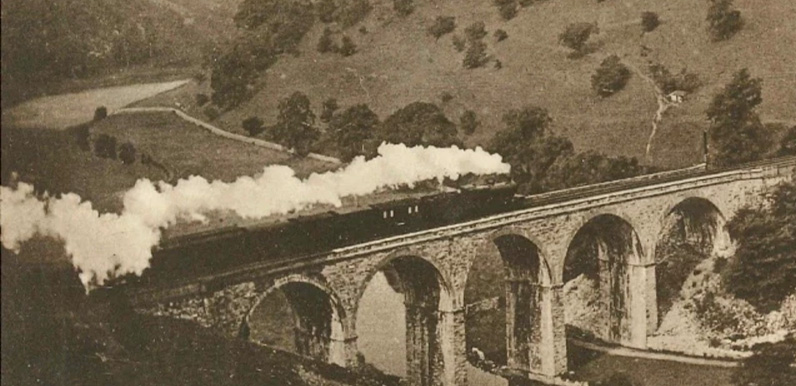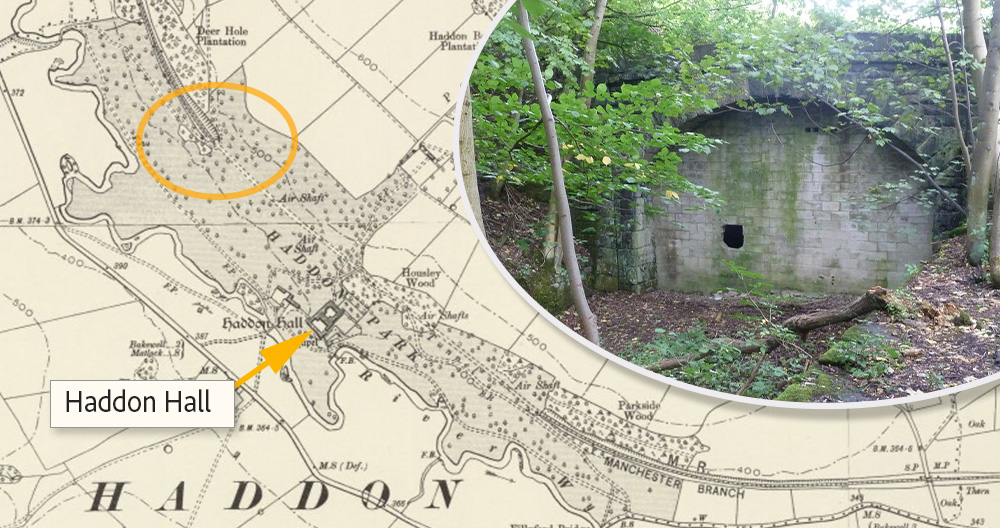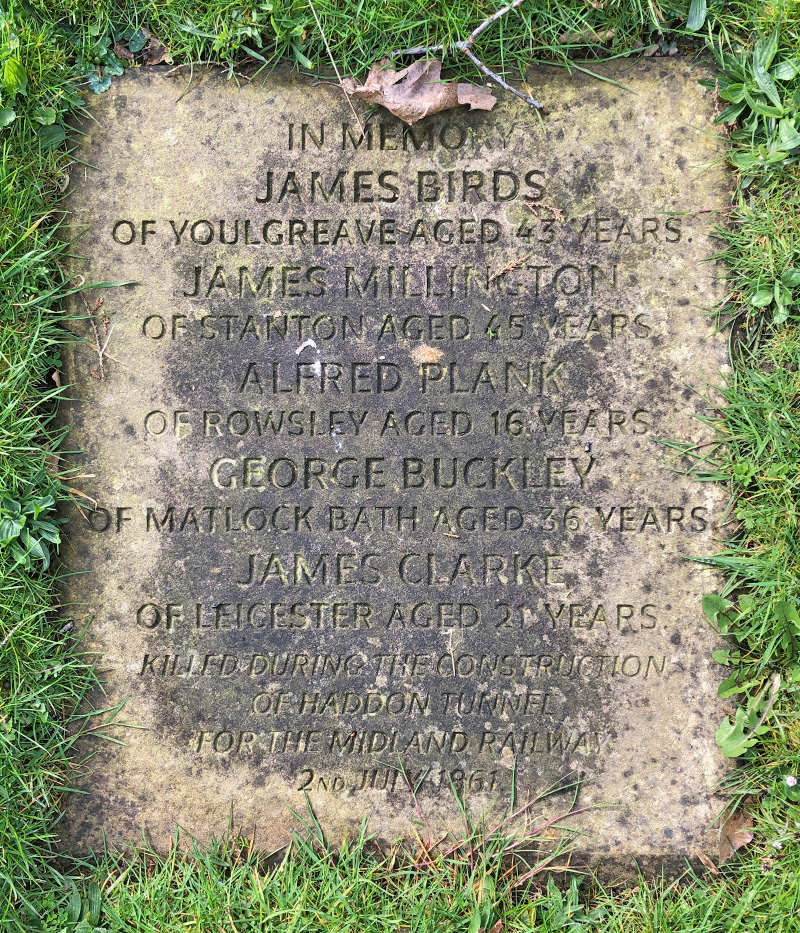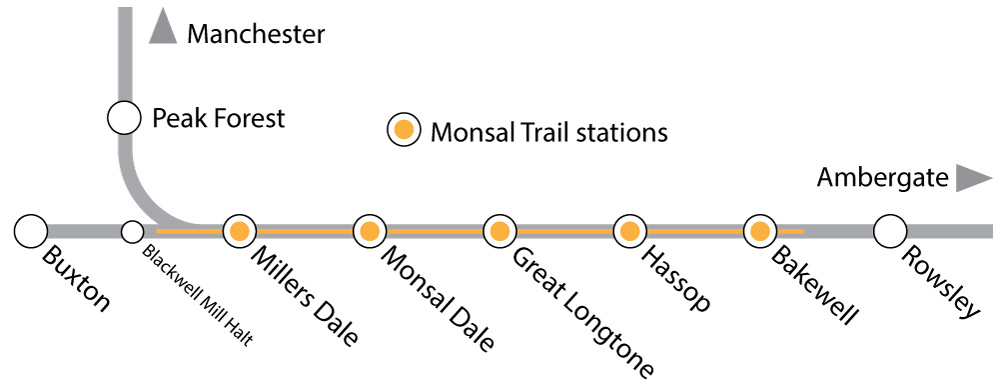Above: The line boasted some marvels of Victorian engineering, including the impressive Headstone Viaduct across Monsal Dale which prompted Victorian artist and critic John Ruskin to complain…
The valley is gone, and the Gods with it; and now, every fool in Buxton can be at Bakewell in half an hour, and every fool at Bakewell at Buxton; which you think a lucrative process of exchange – you fools everywhere.
Picture courtesy of Alan Roberts.
Work on the section of railway line that would become today’s Monsal Trail began in 1862. It should have started some 13 years earlier but had been held up by the Duke of Rutland’s refusal to allow the planned route between Ambergate and Buxton line to pass close to his country seat of Haddon Hall.
Bakewell’s town councillors eventually managed to persuade the Duke that a railway station would be good for the town. He only agreed on condition that the track went underground as it passed the Hall. A stipulation that would cost the lives of five workmen killed during the construction of the completely unnecessary 1058-yard tunnel.
Above: A memorial to the five workers lies just outside the side entrance to Rowsley Church (click to enlarge).
Above: The Bakewell side of the blocked tunnel lies beside a public footpath. It would be wonderful if the tunnel could be reopened – like the others on the Monsal Trail – extending the route into Rowsley and on towards Matlock.
The development of the railways during the second half of the 19th century was more than a little complicated, with different companies fighting over the most lucrative routes. And many of those going bankrupt in the process.
The Ambergate to Buxton route was originally built by the Manchester, Buxton, Matlock & Midlands Junction Railway Company (MBM&MJR). But in 1871, just eight years after completion, they were taken over by one of the largest and most ambitious railway companies in Britain – Midland Railway (MR).
The richest prize
MR wanted to create a rail link between London and Manchester via Buxton, which would have given them a hugely profitable route. They planned to share the Buxton to Manchester part of the route with the London and North Western Railway (LNWR).
LNWR had completed the Buxton to Manchester route in 1863. The same year that MBM&MJR had reached Buxton from Ambergate in the south. (Both Buxton stations sat opposite each other and were opened on the same day.*)
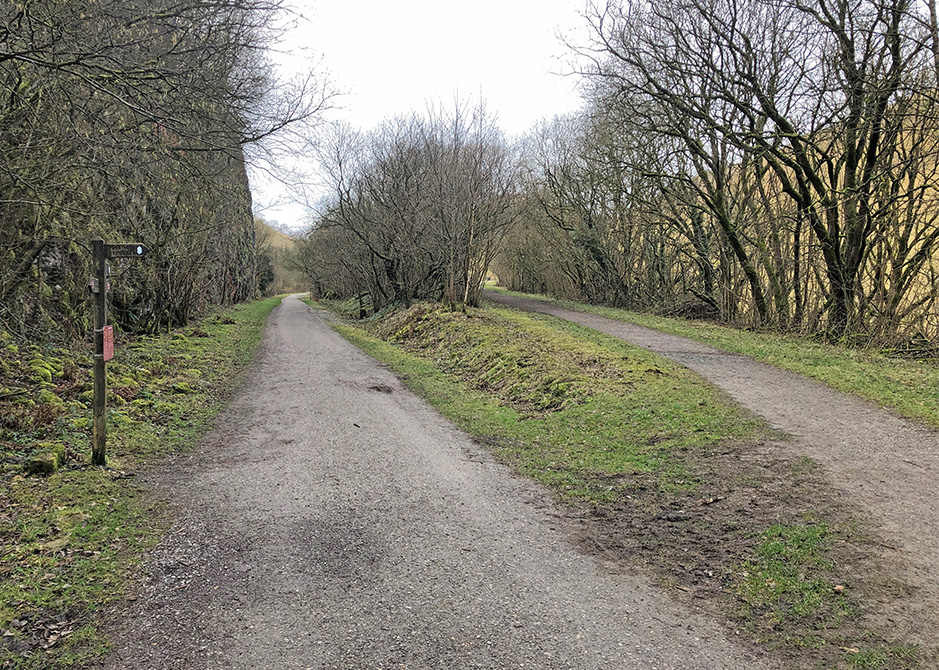
But LNWR wouldn’t agree to allow their MR rivals to share their Manchester line, forcing MR to find an alternative route. They did this by branching off between Miller’s Dale and Buxton, through Peak Forest and Chapel-en-le-Frith.
The new route was opened in 1867. The division of tracks is easy to spot as you approach the western end of the Monsal Trail (above).
In 1923 MR became part of London Midland Scottish Railway (LMS). Which was then nationalised in 1948 under British Railways.
The line eventually fell victim to Dr Beeching’s infamous cuts to Britain’s railways, with the last passenger train running through Haddon Tunnel in 1968. For the next 12 years it lay derelict until it was taken over by the Peak District National Park in 1980.
It was opened as an 8.5-mile walking and cycling trail in 1981 – from Blackwell Mill, three miles east of Buxton, to Coombs Viaduct, a mile south-east of Bakewell. But it was only in 2011 that the tunnels along the route were reopened – previously walkers had to walk around the blocked entrances.
Stations along the trail
There were five stations along what would become the Monsal Trail (shown in orange on the simplified map above). There was a also a small ‘halt’ just beyond the western end of the Trail for railway workers near Blackwell Mill. Click on any link for more on these…
*Click here to view a page on my Goyt Valley website about Buxton’s twin railway stations.

